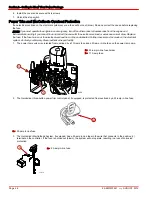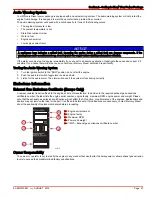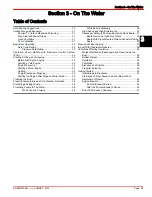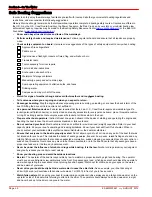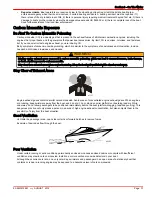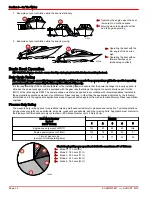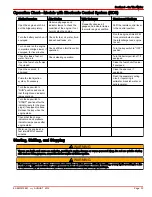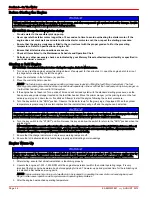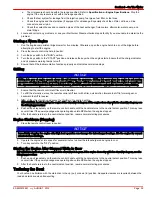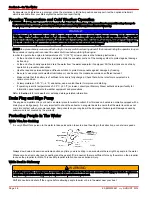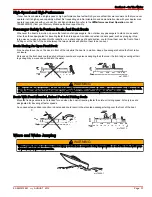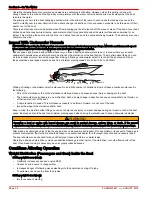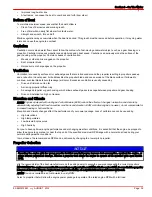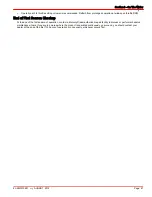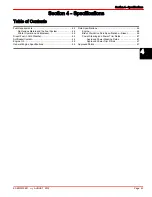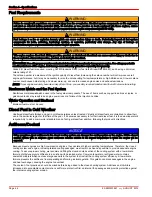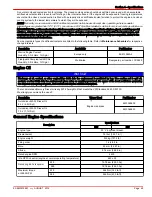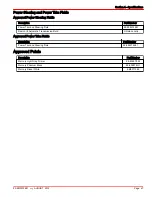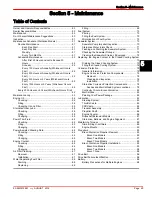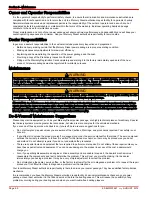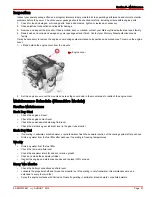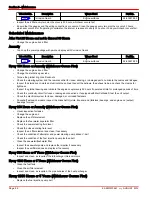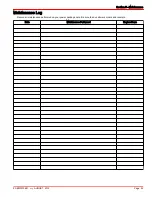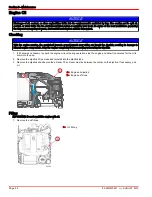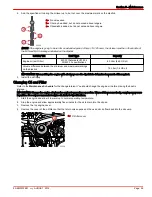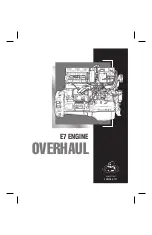
Section 3 - On The Water
Page 40
90-8M0070851
eng
AUGUST 2012
If full throttle operation is below the engine rated RPM, the propeller must be changed to prevent loss of performance and
possible engine damage. On the other hand, operating an engine above the rated engine RPM will cause higher than normal
wear or damage.
After initial propeller selection, the following common problems may require that the propeller be changed to a lower pitch:
•
Warmer weather and greater humidity cause an RPM loss (not as significant on these models).
•
Operating in a higher elevation causes an RPM loss (not as significant on these models).
•
Operating with a damaged propeller or dirty boat bottom causes an RPM loss.
•
Operating with increased load (additional passengers, pulling skiers).
For better acceleration, such as is needed for water skiing, use the next lower pitch propeller. Do not operate at full throttle
when using the lower pitch propeller but not pulling skiers.
Getting Started
Initial Break‑In Procedure
It is especially important that the following procedure be used on new diesel engines. This break‑in procedure allows the proper
seating of the pistons and rings, which greatly reduces the likelihood of problems.
IMPORTANT: It is recommended that the boat not be accelerated hard until this procedure has been completed.
IMPORTANT: Never operate the starter motor longer than 15 seconds at a time, to avoid overheating the starter motor. If
engine does not start, wait 1 minute to allow the starter motor to cool; then, repeat starting procedure.
1. See the appropriate
Starting, Shifting, and Stopping
section and start the engine. Operate the engine at a fast idle until it
has reached normal operating temperature.
2. Operate the engine in gear for 3 minutes at each of the following RPM: 1200 RPM, 2400 RPM and 3000 RPM.
3. Operate the engine in gear for 3 minutes at each of the following RPM: 1500 RPM, 2800 RPM and 3400 RPM.
4. Operate the engine in gear for 3 minutes at each of the following RPM: 1800 RPM, 3000 RPM and Maximum Rated Full
Throttle RPM.
Sterndrive 10‑Hour Break‑In Period (New or With Replacement Gears)
It is important that the following procedure be used on new sterndrives and rebuilt sterndrives with new replacement gears. This
break‑in procedure allows the proper seating of the sterndrive gears and related components, which greatly reduces the
likelihood of problems.
•
Avoid full throttle starts.
•
Do not operate at any one constant speed for extended periods of time.
•
Do not exceed 75% of full throttle during the first 5 hours. During the next 5 hours, operate at intermittent full throttle.
•
The sterndrive should be shifted into forward gear a minimum of 10 times during break‑in, with run‑in time at moderate
RPM after each shift.
Engine Break‑In
20-Hour Break-In Period
IMPORTANT: The first 20 hours of operation is the engine break‑in period. Correct break‑in is essential to obtain minimum oil
consumption and maximum engine performance. During this break‑in period, the following rules must be observed:
•
Do not operate below 1500 RPM for extended periods of time for the first 10 hours. Shift into gear as soon as possible after
starting and advance the throttle above 1500 RPM if conditions permit safe operation.
•
Do not operate at one speed consistently for extended periods.
•
Do not exceed 3/4 throttle during the first 10 hours. During the next 10 hours, occasional operation at full throttle is
permissible (five minutes at a time maximum).
•
Avoid full‑throttle acceleration from idle speed.
•
Do not operate at full throttle until the engine reaches normal operating temperature.
•
Check engine oil level frequently. Add oil as needed. High oil consumption is normal during the break‑in period.
•
At the end of the 20‑hour break‑in period change the engine oil and filter at the interval indicated. Refer to
Specifications
and
Maintenance
.
After the 20-Hour Break-In Period
To help extend the life of your power package, Mercury Diesel recommends the following:
•
Use a propeller that allows the engine to operate at the rated engine RPM when at full throttle with a fully loaded boat.
Refer to
Specifications
and
Maintenance
.

